6 products
-
White Women Dressing Gown | Bathrobe
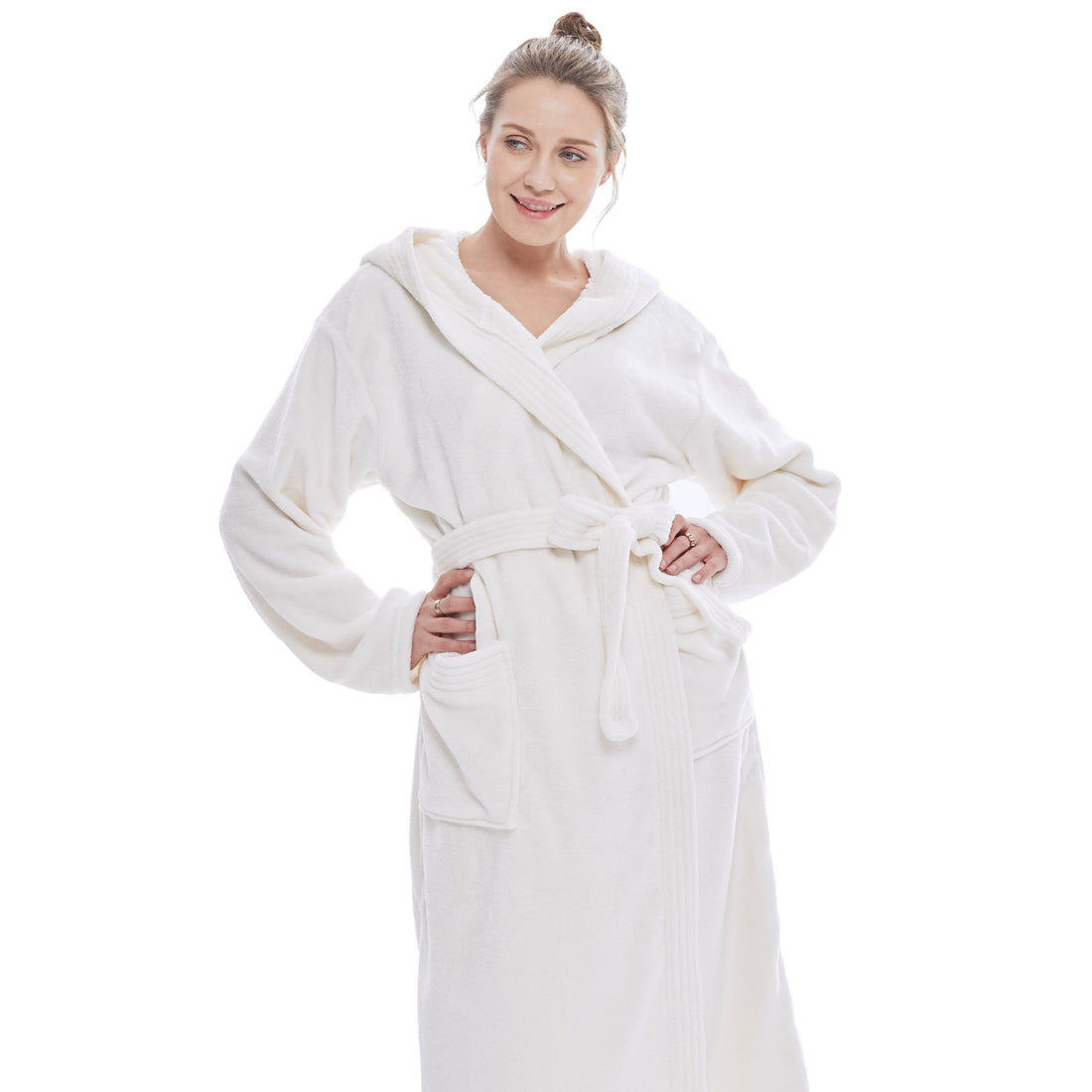 White Women Dressing Gown | Bathrobe
White Women Dressing Gown | Bathrobe- Regular price
-
€52,50 - Regular price
-
€68,90 - Sale price
-
€52,50
-
Sky Blue Women Dressing Gown | Bathrobe
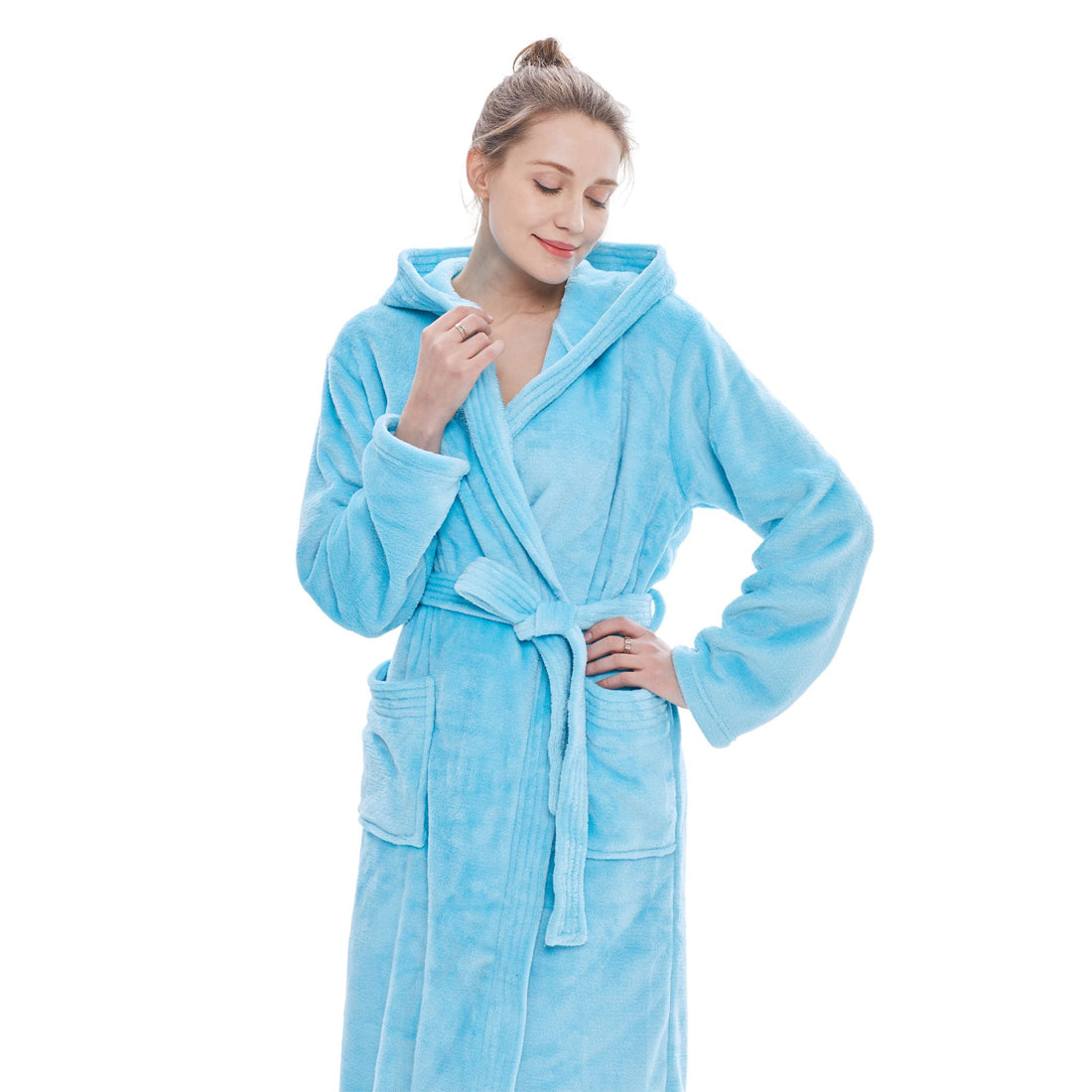 Sky Blue Women Dressing Gown | Bathrobe
Sky Blue Women Dressing Gown | Bathrobe- Regular price
-
€52,50 - Regular price
-
€68,90 - Sale price
-
€52,50
-
Purple Women Dressing Gown | Bathrobe
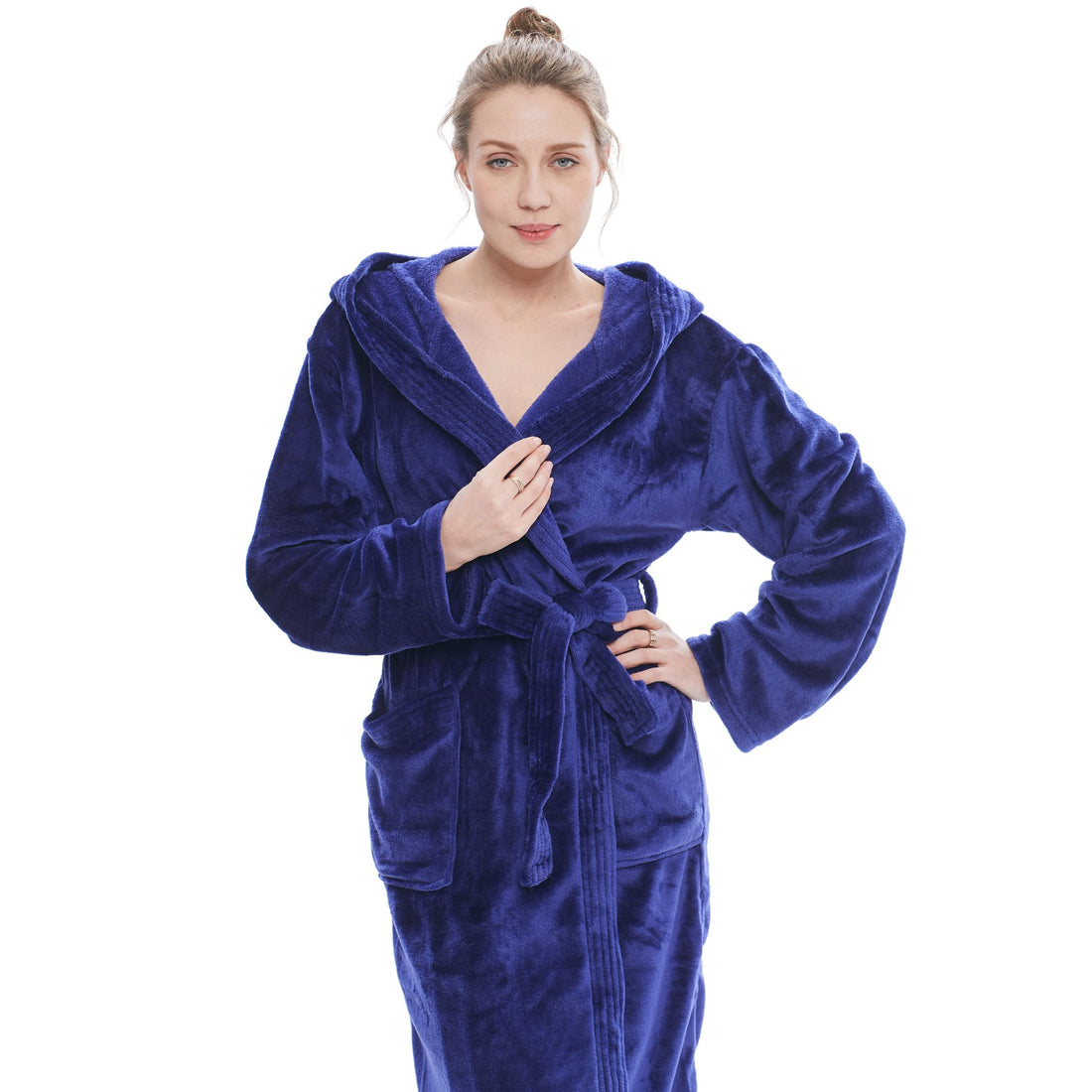 Purple Women Dressing Gown | Bathrobe
Purple Women Dressing Gown | Bathrobe- Regular price
-
€52,50 - Regular price
-
€68,90 - Sale price
-
€52,50
-
Navy Blue Women Dressing Gown | Bathrobe
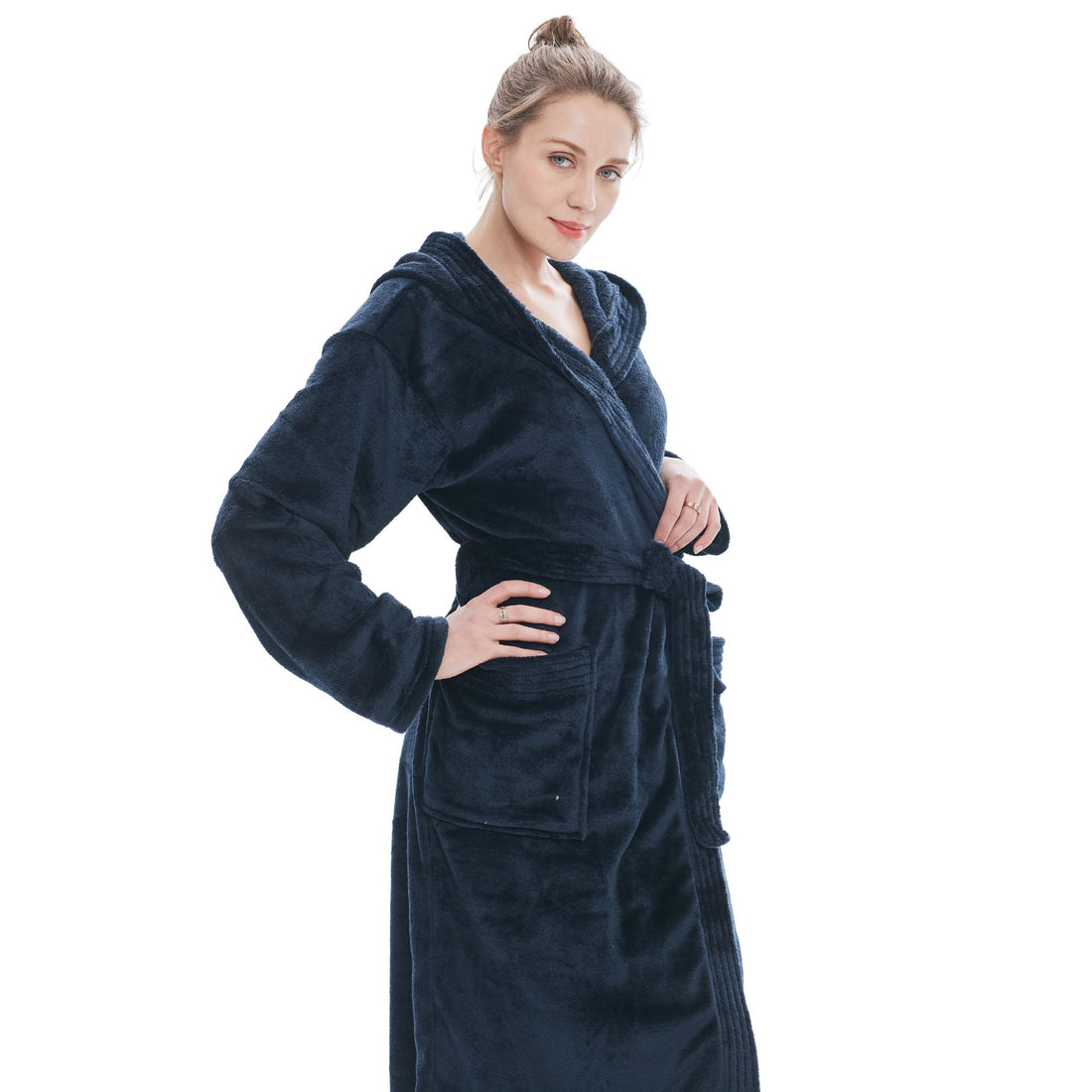 Navy Blue Women Dressing Gown | Bathrobe
Navy Blue Women Dressing Gown | Bathrobe- Regular price
-
€52,50 - Regular price
-
€68,90 - Sale price
-
€52,50
-
Fuchsia Women Dressing Gown | Bathrobe
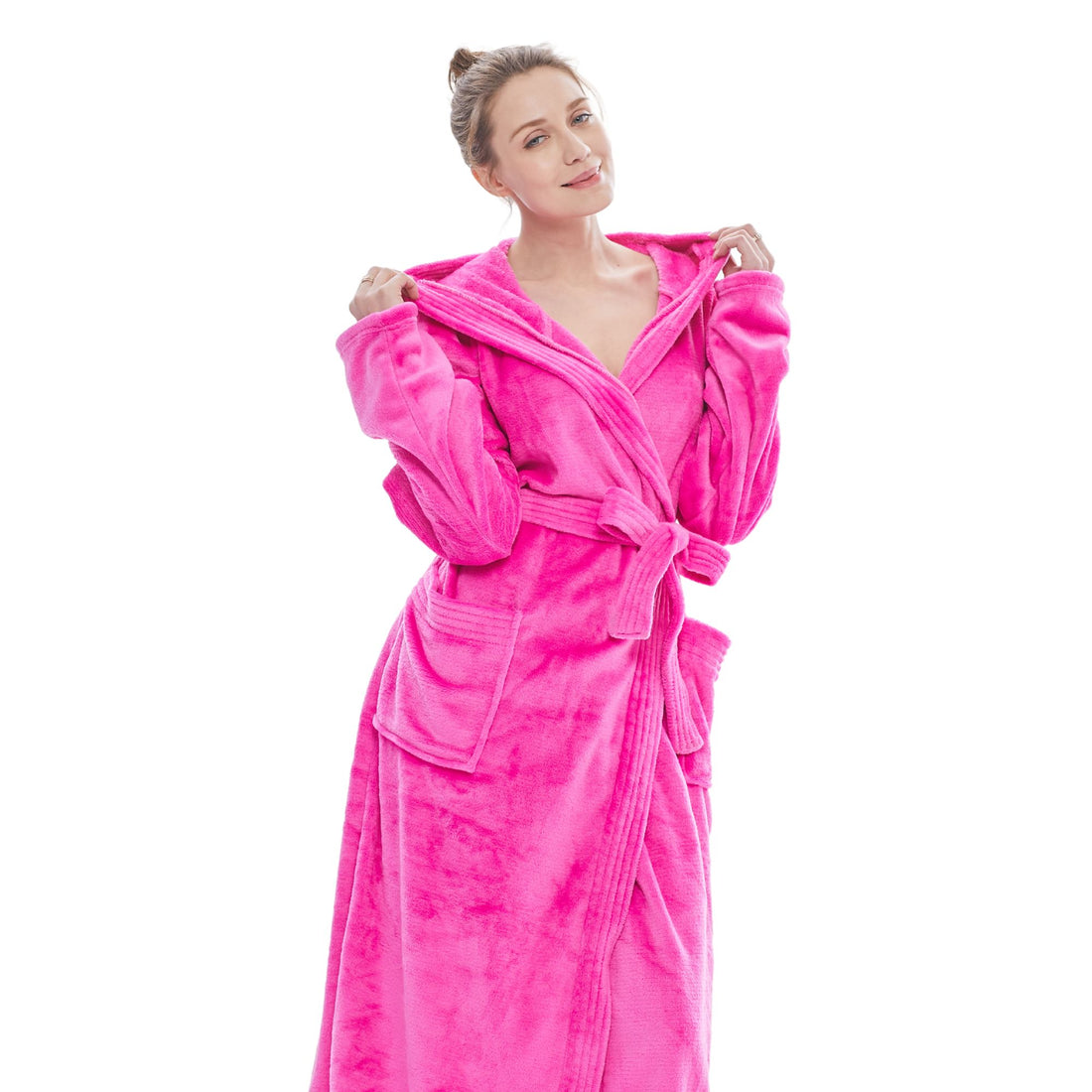 Fuchsia Women Dressing Gown | Bathrobe
Fuchsia Women Dressing Gown | Bathrobe- Regular price
-
€52,50 - Regular price
-
€68,90 - Sale price
-
€52,50
-
Brown Women Dressing Gown | Bathrobe
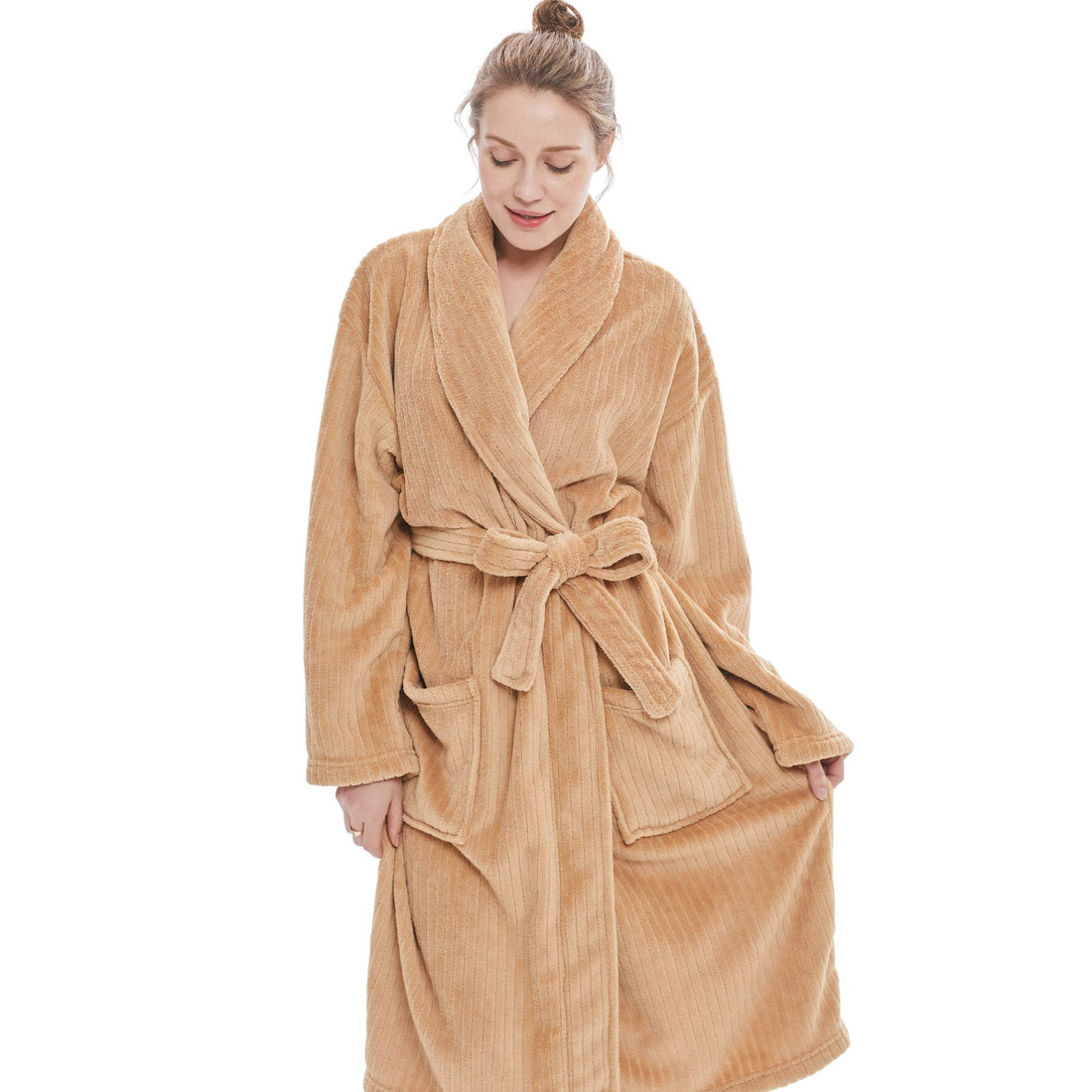 Brown Women Dressing Gown | Bathrobe
Brown Women Dressing Gown | Bathrobe- Regular price
-
€52,50 - Regular price
-
€68,90 - Sale price
-
€52,50
The dressing gown, also called bathrobe, is an essential nightwear or interior garment to face the cold winter evenings.
This comfortable and practical piece of clothing allows you to stay warm while being free to move. As an indoor outfit, forget pajamas, too classic homewear and choose our selection of women's bathrobe, more refined and elegant.
We will explore the history of the dressing gown collection, the different types and styles of dressing gowns available on the market, as well as the criteria and details to consider when buying and delivering a dressing gown. .
What is a dressing gown or what is a dressing gown?
A dressing gown is a comfortable and practical piece of clothing to keep warm at home .
It is often worn in the morning or in the evening, before or after the shower when leaving the bathroom, to relax or to prepare for the day.
It is usually made from soft fabrics such as cotton, silk, fleece or wool. The dressing gown may have finishes such as pockets, buttons, zippers on some products, a v-neck and a hood for added functionality.
It is also available in a variety of colors, shades and patterns and styles to suit all tastes. The dressing gown is an essential element of the winter wardrobe for optimal comfort.
Why do we say dressing gown?
The term "dressing gown" first appeared in 17th century France, where it was used to refer to a piece of clothing that men wore at home.
Back then, the dressing gown was often made of silk and adorned with elaborate patterns. It was a piece of luxury clothing reserved for the nobility. Over time, the dressing gown has become more popular and more accessible to all social classes.
Women also began to wear dressing gowns, which were often cotton or linen and simpler in design.
Today, the dressing gown is an essential basic element of the winter wardrobe to keep warm and for more happiness and comfort at home, pleasant for every moment of relaxation.
Paradoxically, women's and men's products are now used more when leaving the bathroom and not the bedroom.
What is the difference between a dressing gown and a nightgown?
Although both garments are often worn at home to keep warm and for added comfort, the dressing gown and the nightgown have distinct differences.
-
The dressing gown is an outer garment, worn over clothing for relaxing while the nightgown is an inner garment, worn directly against the skin.
-
The dressing gown is often longer than the nightgown and can have details such as pockets, belts, a V-neck, a hood, which makes it more practical for lounging or for carrying out tasks at home. House.
-
The nightgown is generally lighter and more comfortable for sleeping, while the dressing gown is more suitable for walking around the house.
What is the difference between dressing gown and bathrobe?
Although bathrobes and dressing gowns are both loungewear for the home, there are some subtle differences between the two products.
The bathrobe is often shorter than the dressing gown and is designed to be worn after a shower or bath, to dry and warm the body. Bathrobes are often made from lightweight, absorbent, and breathable fabrics, such as cotton terry, bamboo, or terry cloth.
On the other hand, the dressing gown is often longer than the bathrobe and is designed to be worn during the day or in the evening at home, to relax and keep warm. Dressing gowns are often made from heavier, more comfortable fabrics, such as fleece, flannel, or satin.
What are the dressing gown sizes?
Dressing gowns are available in a variety of designs and sizes to suit all body types. Here are the common dressing gown sizes:
-
One Size Fits All : Some dressing gowns are designed to fit all sizes. They often feature a belt or ribbon to allow for a custom fit.
-
Runs Small (XS and S) : For people with shorter builds, size petite dressing gowns provide a more precise fit to prevent the robe from being too long or too baggy.
-
Regular size : Regular sizes are generally available from XS to XL, depending on the manufacturer. It is important to check the size chart to find the size that fits you best.
-
Plus Sizes (XL & XXL) : For tall people, long length and wide shaped dressing gowns provide a comfortable and precise fit to prevent the robe from being too short or too tight. A choice of reason!
Why wear a dressing gown?
keep warm
Dressing gowns are often lined with warm and cozy materials, such as flannel or fleece , which makes them perfect for keeping warm at home during the winter months.
Our items all have sleeves, a shawl collar, a fleece lining and a thick knit hood: ideal for giving you style and softness while fighting against the ambient freshness. An interior garment full of elegance and warmth unlike the kimono, nightgown and pajamas with or without a jacket which are infinitely thinner.
Comfort
Dressing gowns are often roomier than regular lingerie garments, making them more comfortable for lounging around the house.
Our models have a length and their loose shapes offer you a soft cocoon, a touch full of softness and a cozy envelope. Much more comfortable than pajamas for example and therefore pleasant to put on when you get out of bed when you wake up, especially in the winter season.
practice at home
Dressing gowns often feature pockets and belts , making them convenient for doing household chores or relaxing at home without having to wear heavy clothes. The V-neck, no matter the size (L, XL or XXL) hugs the neck without chafing or redness.
Adopt a casual style even at work
Dressing gowns come in a variety of jackets and styles and designs , making them perfect for a casual and comfortable look at home. The hood is also one of the basic assets which also gives a certain allure.
What are the fabrics and materials of dressing gowns?
There are several types of women's and men's dressing gowns on the market, each with its own characteristics and advantages. The main types of dressing gowns are:
-
The cotton dressing gown : this is the most common type of dressing gown. It is light and comfortable, and can be worn all year round. It is also easy to maintain and wash.
-
The silk dressing gown : this dressing gown is more elegant than the cotton dressing gown. It is often used for special occasions and is more expensive than the cotton dressing gown.
-
The fleece dressing gown : this dressing gown is warmer than the cotton dressing gown. It is ideal for cold winter evenings and can be worn indoors or outdoors.
-
The wool dressing gown : this dressing gown is also warm, but thicker than the fleece dressing gown. It is often used for very cold winter evenings.
-
The velvet dressing gown : soft, comfortable and light, velvet is a material of choice, rather expensive, generally favored for the nightgown. Some products or dressing gown models are sometimes made of it.
What is the best material for a women's bathrobe?
Women's cotton bathrobe
The cotton is soft and comfortable, ideal for bathrobes that you will wear after a shower or a bath. It is also absorbent and easy to maintain.
Women's microfiber bathrobe
Microfiber is soft, lightweight and easy to dry. Microfiber bathrobes are often used for travel or outdoor activities.
Women's silk bathrobe
The silk is luxurious in knit and soft, ideal for bathrobes that you will wear for special occasions. It is light and comfortable, but requires specific care to remain beautiful.
Women's polyester bathrobe
Polyester is durable and easy to care for, making it a popular choice for bathrobes. It is also lightweight and breathable, ideal for hot climates.
Women's flannel bathrobe
Flannel is a soft, warm and comfortable material, ideal for bathrobes that you will wear in winter or in cold weather.
How much does a dressing gown cost?
On average, the price of a women's dressing gown and men's dressing gown is between 20 and 50 euros.
Bathrobes made of cotton or fleece are generally less expensive than those made of silk or satin, for example. However, it is possible to find high-end dressing gowns, made from luxurious materials such as silk or cashmere, which can cost several hundred dollars.
It is important to consider the cost versus the quality and durability of the dressing gown. If you plan to wear your robe regularly, it may be best to invest in a higher quality robe that will last longer.
However, if you only plan to wear your robe occasionally, a more affordable option may be a better choice.
Criteria for buying a women's dressing gown
When buying a dressing gown, it is important to consider the following criteria.
The size and cut of the women's dressing gown
Our range corresponds to a selection of women's dressing gowns with a perfect one-size-fits-all cut and size : we wanted to offer our customers a collection of one-size-fits-all fleece nightwear of the highest quality ensuring comfort, warmth, length, elegance to all. It's up to you to discover it!
The fabric of the women's dressing gown
The choice of fabric colors depends on the season and personal preferences. A fleece fabric is often favored for the women's bathrobe or the women's dressing gown for the warmth it provides indoors and outdoors, day and night.
The finishes of the women's dressing gown
Finishes such as pockets, buttons, collar, zippers, etc. are elements to take into account depending on the length and intended use of the dressing gown . Choosing quality and opting for a model or product with excellent finishes can improve our moments of cocooning afterwards.
The colors and colors of our articles and products
We offer 10 models of bathrobes with different colors, to adapt according to your desires: blue, grey, black, pink ... The lengths of the models do not change.
How to fold a dressing gown?
Here are the steps to follow to fold a dressing gown:
-
Button or fasten the ties of your dressing gown, like an indoor jacket with a belt.
-
Lay out the robe on a flat surface , such as a table or a bed.
-
Take the edge of the dressing gown close to the shoulder
-
Fold it over half of the dressing gown.
-
Repeat the previous step with the other edge of the dressing gown , making sure it lines up with the first edge.
-
Fold the dressing gown in half , bringing the lower end towards the upper end.
-
Repeat the previous step a second time to get a small rectangular shape.
-
Store your folded robe in your closet or drawer.
By following these simple steps, you can easily fold your robe for safe and clutter-free storage.
How to tie a dressing gown?
Here are some common methods for tying this loungewear for women and men:
-
The traditional method is to use the belt attached to the dressing gown . Wrap the belt around your waist, crossing the two ends in front. Tie a knot or bow to hold the belt in place.
-
If your robe doesn't have a belt, you can use a sash or ribbon of the same or complementary color to tie the robe . Wrap the sash or ribbon around your waist, crossing the two ends in front, then tie a knot or bow to hold it in place.
-
Another method is to use buttons or buttonholes to fasten the robe . If your robe has buttons, put the robe on as you would a coat, lining up the buttons and buttonholes. Then close the buttons to hold the dressing gown in place.
History of the dressing gown
The dressing gown is a piece of clothing that dates back to medieval times. Originally, it was worn by men and not women to keep warm in their bedrooms. Over time, it has become a more universal piece of clothing, worn by both genders.
In the 1920s, the dressing gown became an important fashion item. It was often silk and embroidered, worn with elegant shoes. However, over time, the dressing gown has become less elegant and more functional, especially the women's collection.
New products have arrived, less expensive, in polyester, with less softness to the touch, less length and a strong similarity with the bathrobe. The more refined but more expensive models, similar to the nightie or the kimono, have been relegated to the background, especially during the winter season.
FAQs
What is a dressing gown ?
A dressing gown is a comfortable and practical piece of clothing similar to a bathrobe for keeping warm at home.
Why do we say dressing gown ?
The term dressing gown first appeared in 17th century France, where it was used to refer to a piece of clothing that men wore at home.
At the time, dressing gowns were often made of silk and decorated with elaborate designs. It was a luxury piece of clothing reserved for the nobility.
Why wear a dressing gown ?
We recommend that you wear a dressing gown to keep warm, for more practicality, for more comfort at home and to adopt a casual style.
What are the fabrics and materials of a dressing gown ?
The most common fabrics and materials for a dressing gown are cotton, wool, polyester, silk, t176>the fleece and the satin.
What is the difference between dressing gown and bathrobe ?
- The bathrobe is often shorter than the dressing gown and is designed to be worn after a shower or bath, to dry and warm the body. Bathrobes are often made from lightweight, absorbent and breathable fabrics, such as cotton terry, bamboo or terry cloth.
- The dressing gown is often longer than the bathrobe and is designed to be worn during the day or evening at home, to relax and keep warm. Dressing gowns are often made from thicker, comfortable fabrics, such as fleece, flannel, or satin.
Which bathrobe to choose ?
The Oversized Hoodie offers you the best women's bathrobes and men's bathrobes, taking into account the material, thickness, size, style and color.
When to wear a bathrobe ?
Here are some times when wearing a bathrobe can add a touch of relaxation and well-being to your daily life: after showering or bathing, upon waking up, before going to bed, during moments of relaxation at home , at the pool or spa, during a pampering weekend...
How much does a dressing gown cost ?
On average, the price of a women's dressing gown and a men's dressing gown is between 20 and 50 euros.
How to fold a dressing gown ?
- Button or close the fasteners of your dressing gown.
- Lay the dressing gown out on a flat surface, such as a table or a lit.
- Take the edge of the dressing gown near the shoulder
- Fold it over half of the dressing gown .
- Repeat the previous step with the other edge of the dressing gown, making sure it is aligned with the first edge.
- Fold the dressing gown in half bringing the lower end towards the upper end.
- Repeat the previous step a second time to obtain a small rectangular shape.
- Store your folded dressing gown in your closet or drawer.
How to tie a dressing gown ?
Use the belt attached to the dressing gown.
If your dressing gown does not have a belt, you can use a belt or ribbon of the same color.
Another method is to use buttons or buttonholes to fasten the dressing gown.







